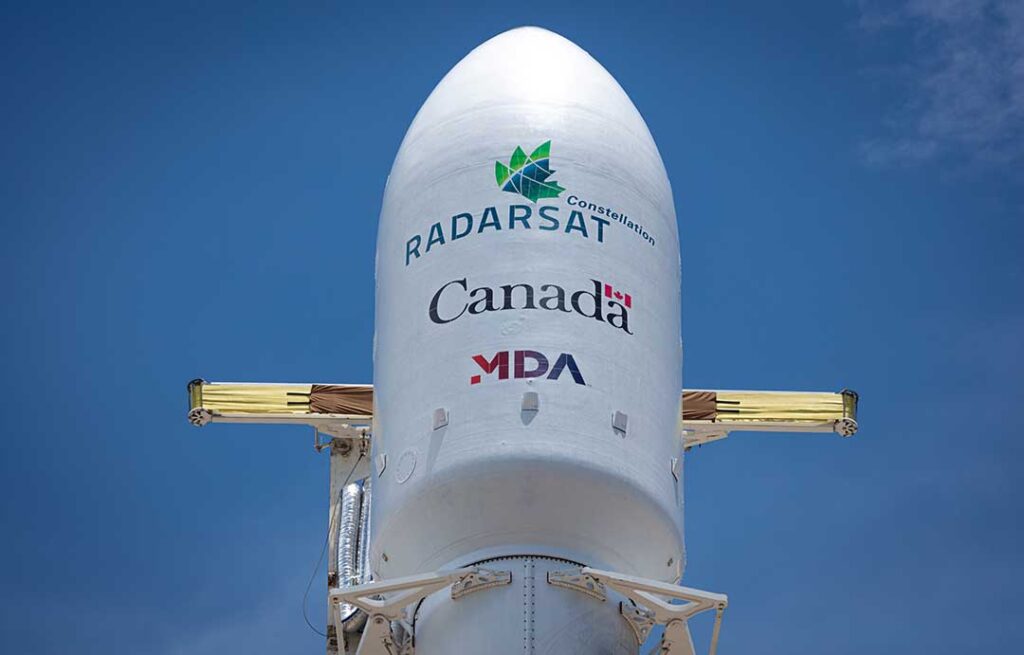THE WATCH STAFF
The Canadian military is in the process of launching a space division.
The United States’ partner in the North American Aerospace Defense Command (NORAD) is seeking to establish a space division in 2022 as it further develops its capabilities in the orbital domain.
“It makes logical sense for us to look at standing up a Canadian Space Division that basically generates those forces that will then be able to be employed in operations for Army, Air Force, Navy and SOF [Special Operations Forces],” Brig. Gen. Michael Adamson, the Royal Canadian Air Force (RCAF) director general for space, told the website SpaceNews in an April 20, 2022, story.
(Pictured: A SpaceX Falcon 9 rocket carrying Canadian satellites in 2019 at what is now Vandenberg Space Force Base in California. The base is home to the Combined Space Operations Center, the U.S.-led partnership with Australia, Canada and the United Kingdom.)
Adamson, pictured, said a proposal is making its way through organizations in Canada’s Department of National Defence and ultimately will be sent to Defence Minister Anita Anand, according to SpaceNews.
“We hope to have sign-off and stand up of the Canadian Space Division at some point in the next six to eight months,” he said.
Canada would be joining U.S. allies who have created similar organizations in recognition of space’s importance in military operations and homeland defense. Australia’s Space Command began operations on March 22 with Defence Minister Peter Dutton suggesting a
U.S.-style standalone service in the future, according to the country’s ABC News.
If instituted, Canada’s space organization would be the latest advancement in what Adamson called the “never-ending evolution” of the RCAF during a 2021 podcast.
“We have an air division, [it makes sense that] we probably have a space division as well,” he said in a May 20, 2021, episode of The Space Economy.
“Within the last defense policy – ‘Strong, Secure and Engaged’ — there was an explicit mention of the need to grow the space capabilities both in terms of platforms and, of course, the size of the workforce as well,” Adamson told the podcast.
Canada’s space component — much like Australia’s — would be a “more modest-level” organization than its U.S. counterpart. The U.S. Space Force is expected to number 16,000 people at full strength, according to Space News, but Adamson noted that Canada’s version — despite using the term “division” — would be much smaller.
“At the moment, we’re probably 180-strong in the space enterprise,” he told SpaceNews. “We’re hoping to grow the enterprise across the entire Canadian Forces up to 270.”
“What we are doing [now] is identifying the space cadre in the Canadian Armed Forces,” Adamson told SpaceNews. “There are certain occupations and jobs that really lend themselves well to coming and working in the space environment.”
The division would include civilian personnel, he said.
Adamson said it’s vital for Canada to evaluate what space capabilities it needs and which ones it can utilize in joint military projects with allies.
“The other piece we need to consider is this incredible surge in commercial capability,” he told SpaceNews. “They seem to be making even larger leaps and bounds in terms of tech advance than some of the government-funded R&D programs we see around the globe.”

